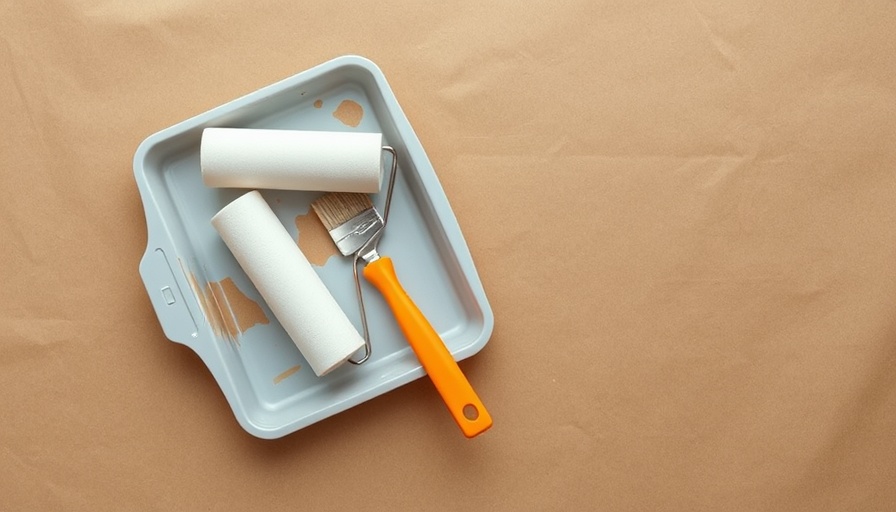
Envision Your Ideal Bathtub: Beyond the Basics
Dreaming about your ideal bathtub isn’t just about picking a shape and color; it’s about envisioning an oasis that fits your personal style and meets your lifestyle needs. Whether you're looking to create a serene space for relaxation or a multifunctional area for family use, the bathtub you choose will play a crucial role in how your bathroom feels and functions. Take time to reflect on your end goals before diving into specifics.
The Role of Space in Bathtub Selection
The available space in your bathroom significantly influences the type of bathtub you can consider. A spacious bathroom gives you flexibility in design, while a compact area requires innovative solutions. Consider the footprint of your new tub and how it will integrate with existing fixtures. If you’re working with a small bathroom, corner tubs or compact soaking tubs can maximize your layout without sacrificing comfort.
Why Tub Shape Matters: Comfort Meets Style
Choosing the right bathtub begins with its shape. The comfort of your current tub should guide you: if it leaves you feeling cramped or doesn’t invite relaxation, it’s time to explore new options. For instance, oval and round bathtubs tend to provide a more contemporary aesthetic, while rectangular shapes remain timeless. Try out display models in-store to gauge your comfort level before making this important decision.
Assessing Weight and Structural Support
Understanding the weight of your new bathtub is essential, particularly if you plan a significant upgrade. A professional assessment of your bathroom’s structural integrity is advisable. A typical bathtub can weigh from 50 pounds for acrylic models to over 300 pounds for heavier materials like cast iron or stone. It’s wise to factor in the additional weight of water when full, which can average around 8.34 pounds per gallon. Ensuring your floor can support the new tub can save major headaches down the line.
Exploring Tub Depth and Height
The height and depth of your bathtub can affect not only its aesthetic but also its usability. An inset tub can offer easier access and seamless integration, especially in small spaces. Generally, deeper soaking tubs measure between 18 and 22 inches, providing an inviting space to unwind after a long day. Be mindful of the depth to ensure it aligns with your requirements for comfort and ease of entry.
Material Choices: The Core of Your Bathtub
Bathtub material affects everything from maintenance to longevity. Common options like acrylic and fiberglass offer lightweight and easy-to-clean surfaces. For those seeking durability, metal tubs with porcelain enamel add a classic feel but can be heavy. Consider luxurious choices like natural stone for a spa-like vibe, but be aware of their weight and installation complexities. Assessing your budget will help narrow down your material options effectively.
Finishing Touches: Aesthetic Appeal
The exterior of your bathtub provides an opportunity to elevate your bathroom’s decor. Consider how the outer layer can match or contrast with your overall bathroom theme. Adding architectural trim or tile can enhance the design without breaking the bank. Remember to use high-quality sealants to protect your investment in a moisture-prone area like this.
Updating Fixtures for a Cohesive Look
This is a perfect chance to revamp your faucets and fixtures. Choosing components that match your new bathtub can unify your design elements. Don’t hesitate to opt for modern finishes or timeless designs that catch your eye. Remember to check compatibility and installation requirements to ensure a smooth upgrade.
Budgeting Wisely for Your Bathtub Project
Renovating your bathroom to include a new bathtub is an exciting endeavor, but budgeting should always be a priority. From the cost of the tub itself to installation fees and any necessary structural work, know what you are willing to invest. Do thorough research to compare prices, and be prepared for unexpected costs, so you can stay on track without overspending.
Engaging with Community Resources
For many DIY enthusiasts, tackling bathroom renovations can feel overwhelming. Luckily, your local home improvement stores often offer workshops and demonstrations on various projects, including bathtub installation. Engaging with these resources not only enhances your skill set but also connects you with fellow homeowners who share the same passion for DIY projects.
Call to Action: Take the First Step!
Ready to transform your bathroom with the perfect bathtub? Start your journey by visiting local showrooms to explore your options today! Get hands-on experience in choosing and perfecting the ideal fit for your home. Remember, your ideal sanctuary is just a choice away.
 Add Row
Add Row  Add
Add 




Write A Comment